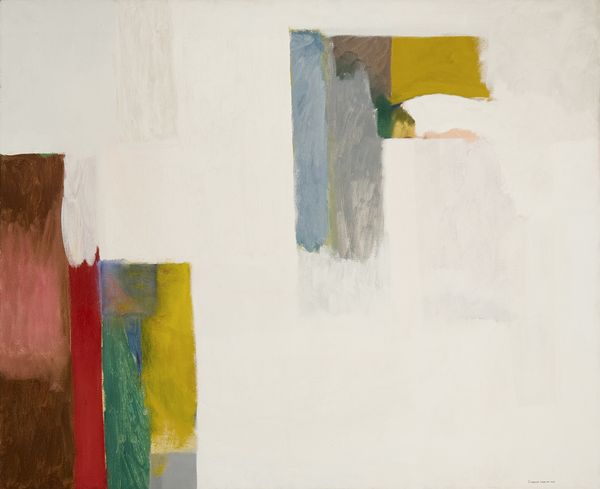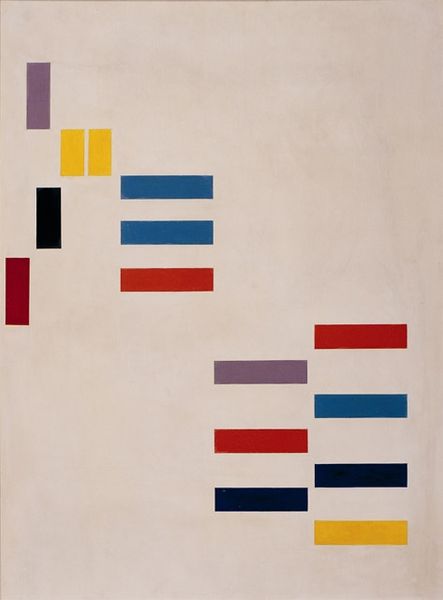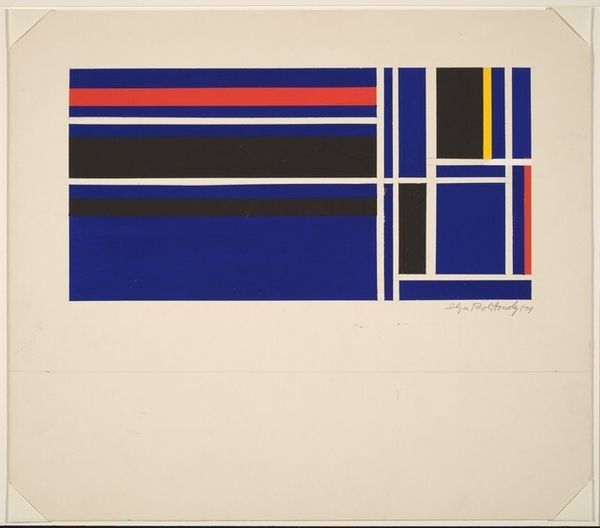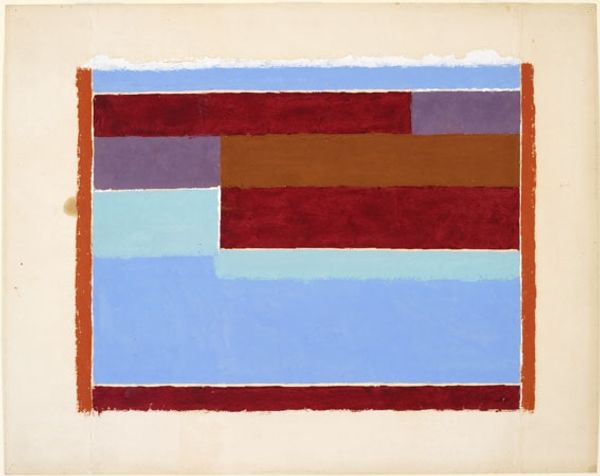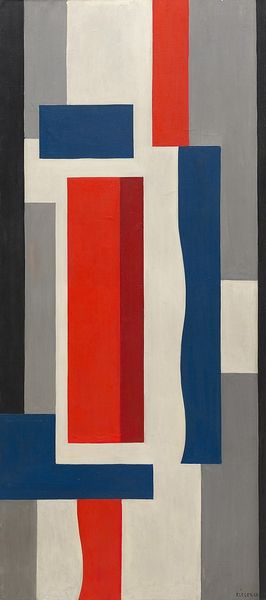
acrylic-paint
#
abstract-expressionism
#
abstract expressionism
#
acrylic
#
abstract painting
#
acrylic-paint
#
form
#
geometric-abstraction
#
abstraction
#
line
Copyright: Robert Goodnough,Fair Use
Curator: Here we have Robert Goodnough’s "Large Rectangles Large" from 1965. It’s an acrylic on canvas piece, and the rectangles—well, they certainly are large! Editor: My first thought? Organized chaos. I mean, there's this almost architectural structure trying to assert itself, but the rectangles themselves seem like they're jostling for position, flirting with collapse. There's such tension there. Curator: It’s interesting that you say that, because Goodnough was deeply involved in the Abstract Expressionist movement. His work, especially at this time, played with the dynamic relationship between form and chance. It might appear random, but he carefully planned the composition. Editor: Planned randomness, that's a paradox if I've ever heard one. Look closely; the colors pop, those vibrant blues and reds, fighting to exist amongst those stark blacks, set against a washed-out background. I think the eye is tricked in to following his line almost as if there is movement even with flat space. Almost cubistic in its own abstract fashion. Curator: Well, that very push and pull makes "Large Rectangles Large" engaging. Post-war America saw this tension between order and freedom manifesting culturally, even politically. Abstract Expressionism became an unwitting vehicle for national ideals about individuality in social and cultural uniformity. Editor: Oh, I can absolutely see the reading now; each rectangle struggling to breathe and stand-alone, almost like how each individual struggled and survived within the structure that surrounded it. Is that maybe why his lines seems unfinished too? Is this to hint at the struggle, because for goodness sake, there's always one!? Curator: The incomplete aspects draw you in and that really resonates! Goodnough is asking us to reconsider those notions of abstraction from the 1960s by leaving gaps for viewers. This abstraction then goes beyond the physical and begins touching on the realm of politics in the sense of individual experience, especially since America struggled with racial integration within this period. Editor: It really is more than meets the eye with these shapes and their color composition. Curator: Exactly, it becomes something truly, utterly poetic. Editor: This one certainly invites you to see that behind what looks initially unplanned, there's careful thought, history, and reflection embedded within the colors and forms of 'Large Rectangles Large'.
Comments
No comments
Be the first to comment and join the conversation on the ultimate creative platform.




